In today’s instant-answer world, taking time to truly understand someone’s perspective may seem old-fashioned or inefficient. But empathy is making a comeback in customer service. As it turns out, customers crave human connection. They want to be truly heard and understood as individuals, not hustled through a robotic script. Leading with empathy transforms sterile transactions into meaningful relationships built on trust.
This article will look into empathy in the contact centre context, the overlooked superpower that can connect you with customers, boost loyalty, and elevate service from good to great.
What is Empathy-Centric Customer Service?
Empathy in customer service is about seeing the world from the customer’s perspective, connecting emotionally, and responding to their unique needs in a compassionate way. It means listening fully without distractions or judgment. It’s about crafting tailored solutions for that specific person, not churning out one-size-fits-all responses. It’s understanding context and emotional state to guide your approach.
Why Lead with Empathy-Centric Customer Service?
In our metrics-driven business world, empathy can be brushed off as a “nice to have” rather than a must-have. But evidence proves otherwise:
- 59% of customers prefer empathy over speed in issue resolution, according to Customer Contact Week Digital. Being heard trumps being hustled.
- 84% say being treated as a person, not a number, wins their business, per Salesforce research. Cookie-cutter service just doesn’t cut it anymore.
Leading with empathy transforms how companies communicate, solve problems, and drive loyalty. It builds an authentic human connection that keeps customers coming back. For customers today, efficient service without empathy leaves them cold. They expect solutions tailored to their specific needs delivered with compassion. Empathy sets your brand apart.
Mastering the Subtleties of Genuine Empathy
But how you can develop this empathy inside your company? There are a few main areas for this, including working on communication, starting empathy training, and working on your company’s policies.
Authentic empathy involves nuanced skills:
Active listening – Give your full, undivided attention. Listen to understand the customer’s perspective, not just wait your turn to respond. Ask thoughtful follow-up questions. Avoid distractions.
Reading emotional cues – Watch and listen for subtle clues, from tone of voice to sighs to hesitant pauses. These cues reveal the customer’s emotional state so you can tailor your approach accordingly. n video or face-to-face interactions, body language also becomes crucial, contributing to 55% of the overall effectiveness of the message, as suggested by Dr. Albert Mehrabian’s communication model.
Matching tone and body language – Especially on calls and video chats, adopt a warm and friendly tone. For in-person interactions, use welcoming body language like smiling and open posture. This immediately puts customers at ease.
Emotional intelligence – Understand and manage your own emotions first so you can remain calm, focused, and present even in high-pressure situations. Skilled representatives stay cool under fire and handle frustrated customers with grace. According to the World Economic Forum, emotional intelligence will be one of the top 10 job skills by 2025.
Mastering the nuances of empathy establishes an instant rapport with customers. They feel heard and understood, not rushed through a robotic script.
Building a Customer-Centric Culture
This means making sure that customers are considered when making decisions about how to structure your company and set policies. Some aspects of this are:
Leadership and Organisational Commitment: Leadership plays a critical role in embedding an empathy-centric culture. A study by Deloitte revealed that organisations with highly engaged leaders have an 87% lower staff turnover rate.
Policies and Practices that Prioritise Customer Needs: Creating policies that focus on customer needs, like flexible return policies or proactive customer service, can significantly enhance customer loyalty. A report by KPMG found that customer-centric companies in the UK were 60% more profitable compared to companies that were not focused on the customer.
The Payoff: Tangible Benefits of Leading with Empathy
An empathy-first approach delivers powerful bottom-line business results:
- 17% more spending from customers of companies with excellent service, according to American Express research. Empathy drives increased wallet share.
- 3X more sales generated by emotionally engaging customers, per a Harvard Business Review study. Connecting drives conversions.
- 23% greater profitability in highly engaged teams, says Gallup. Empathy boosts internal culture too.
While empathy may seem touchy-feely, the data proves it has concrete benefits. Customers spend more, buy more, and drive growth when they feel understood.
Brands Known for Best-in-Class Empathetic Service
The proof is in the pudding. Take a look at real-world examples of brands beloved for empathy-driven customer service:
John Lewis has reached icon status in the UK retail sector for their hyper-personalized service. Staff go out of their way to understand customers’ needs and cater to them. This empathy focus pays off with sky-high Net Promoter Scores consistently above 70, considered excellent in retail.
First Direct Bank built their reputation on deep customer understanding and emotional connections from the start. Their satisfaction score hit an impressive 85% in a recent UK Customer Satisfaction Index – a competitive industry where many struggle to break 70%.
These brands prove that empathy-centric service is not just feel-good philosophy – it’s smart business strategy that delivers tangible results.
Start Your Empathy Mindset Shift
Ready to transform your own customer service approach? Here are steps for embracing an empathy-first mindset:
Hire for emotional intelligence – Update hiring practices to assess candidates’ natural empathy, emotional intelligence, and listening skills. Look beyond qualifications to find reps with the right personal traits. ompanies that implement regular feedback have 14.9% lower turnover rates.
Train for empathy – Implement roleplaying exercises to practice compassionate responding. Provide regular feedback to reinforce strengths and identify growth areas. Ongoing training maintains skills.
Develop customer-centric policies – Design processes, procedures, and programs with the customer’s ease, needs, and perspective top of mind first. Double check that policies map to customer expectations.
Talk to customers – Continuously seek direct customer input through surveys, interviews, and focus groups. Let customers guide your approach – their pain points and priorities lead the way.
Utilise technology – Incorporate innovations like AI and sentiment analysis to gather data on customer needs and better predict desires. But use tech to enhance human connections, not replace them. A survey by Accenture showed that 84% of executives believe AI is a strategic priority for their businesses today.
Conclusion
With some focused effort, any brand can implement an empathy mindset shift. The payoff? More meaningful customer and employee connections, increased loyalty, and growth. Empathy is the competitive differentiator that today’s customers demand. Are you ready to tap into its potential and take your customer experience to the next level?




